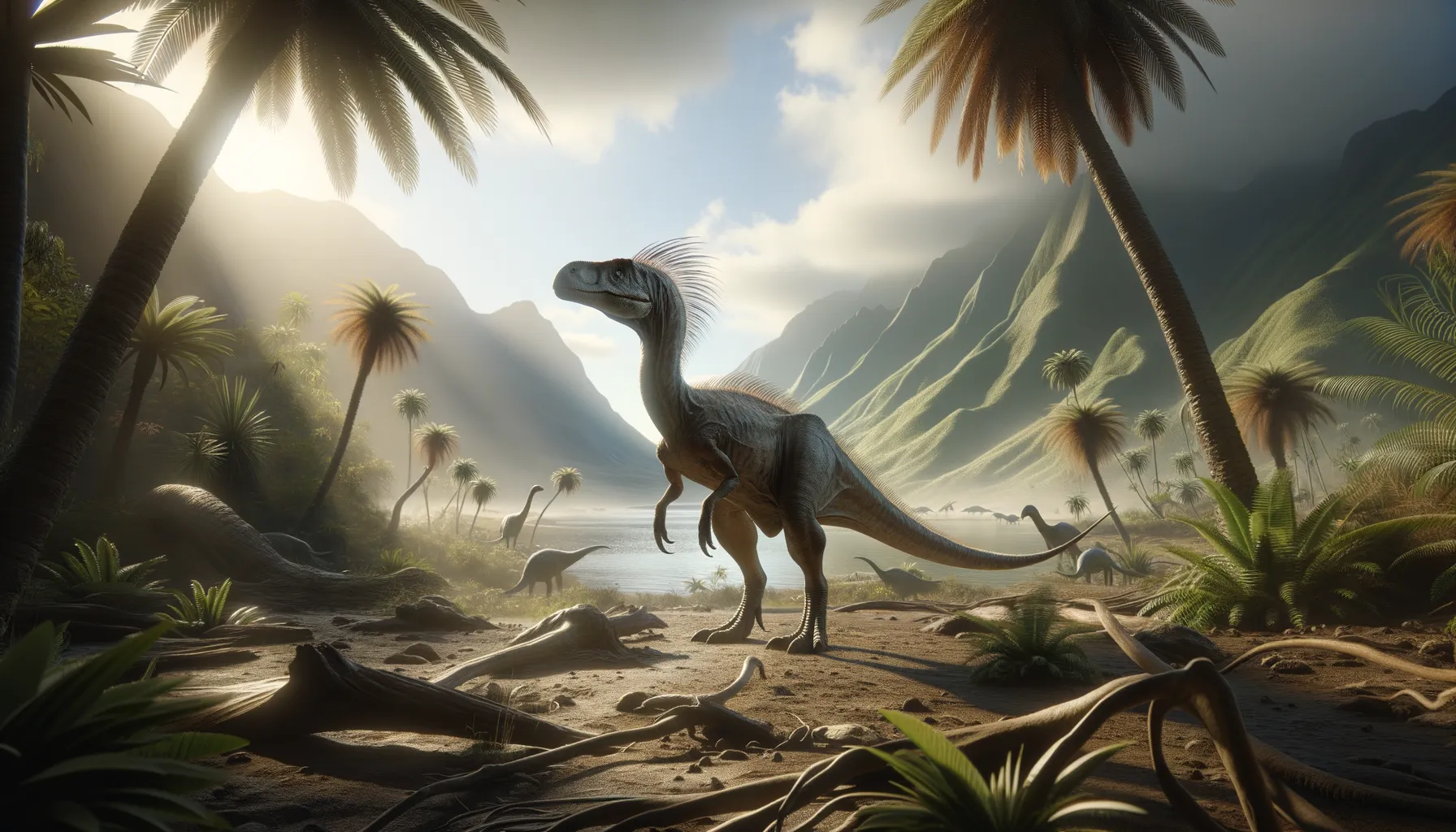
Laquintasaura
Early dinosaur with social ties and quick steps.
Period
Jurassic
Length
Approximately 1 meter long.
Height
Stood about 0.5 meters tall at the hips.
Weight
Estimated to weigh around 25 to 50 kilograms.
Laquintasaura was a small, early Jurassic dinosaur that roamed what is now South America. This dinosaur lived in herds, suggesting social behavior uncommon in its time. Its discovery provided new insights into the spread and diversity of early dinosaurs in the southern hemisphere. Despite its small size, Laquintasaura was an important part of its ecosystem, likely acting as a herbivore or omnivore, contributing to the complexity and balance of its environment.
Diet
Laquintasaura was likely an omnivore, feeding mainly on plants and small insects. Its teeth were suitable for munching vegetation, but it might have consumed small animals when available.
Hunting
This dinosaur did not hunt in the traditional sense like large predators. Instead, it foraged for food, using its size and agility to navigate dense underbrush in search of plants and small prey.
Environmental challenges
Living during the early Jurassic presented several environmental challenges for Laquintasaura, including fluctuating climates and the rise of new predator species. Its small size may have made it vulnerable to larger carnivorous dinosaurs. However, residing in herds likely provided some protection against such threats. The changing plant life during this period also required adaptable foraging strategies.
Speed
Moderate runner, capable of quick short bursts.
Lifespan
Potentially lived up to 20 years in the wild.
First discovery
Discovered in 2014 in the La Quinta Formation of Venezuela.
Fun Facts
- Laquintasaura was a small, bird-hipped dinosaur that lived around 200 million years ago.
- This dinosaur was discovered in Venezuela, making it one of the rare dinosaurs found in northern South America.
- Laquintasaura was roughly the size of a turkey, standing about 3 feet long including its tail.
- It is believed that Laquintasaura lived in herds, which is evidenced by the clustering of their fossils.
- Despite its size, Laquintasaura had sharp teeth that suggest it was an omnivore, eating both plants and small animals.
- Laquintasaura is one of the earliest known ornithischian dinosaurs, a group that includes famous species like Triceratops and Stegosaurus.
- The discovery of Laquintasaura helps scientists understand more about dinosaur diversification after the end-Triassic extinction.
Growth and Development
Laquintasaura hatched from eggs and grew quickly to evade predators. The early stages of its life were critical, with rapid growth necessary to reach a size that ensured greater survival chances. Development would have been influenced by environmental conditions and food availability.
Habitat
Laquintasaura inhabited areas with dense vegetation, providing ample food sources and protection. The terrain likely included forests and open areas where herds could move and forage. Being a native of the region now known as Venezuela, it adapted to the humid, warm climate of its habitat.
Interaction with other species
Laquintasaura's existence in herds suggested complex social interactions, likely including communication and collective defense. It coexisted with various other species, potentially altering its foraging patterns to avoid larger herbivores and predators. Peaceful interactions with other herbivorous dinosaurs are likely as they shared resources.
Natural lifespan
Laquintasaura could naturally live up to two decades barring predation or other external factors.
Reproduction
Laquintasaura reproduced by laying eggs, likely in nests hidden within vegetation for protection. Nesting behavior might have included communal nesting sites, as herding suggests cooperative strategies in rearing young. Eggs would have been cared for to some extent, but hatchlings were likely required to be self-sufficient quickly.
Social behaviour
Herding behavior indicates that Laquintasaura was social, relying on group dynamics for survival. Within the herd, individuals might have had roles or hierarchies, although this remains speculative. Communication possibly included vocalizations or visual signals, crucial for coordinating movement and alerting others of danger.
Fossil locations
Laquintasaura fossils have primarily been found in the La Quinta Formation of Venezuela. These discoveries highlight the dinosaur's range and adaptability to the early Jurassic environments. Fossilized remains have provided significant insights into the early dinosaurology of South America.
